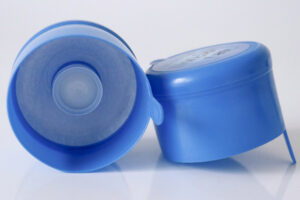Foreword
As film labeling machines of 5 gallon water bottle caps gain widespread acceptance, they are increasingly replacing manual label applications for their efficiency and precision. This transition has brought about new requirements for adhesive label production. In this blog, we’ll discuss some common issues when switching from a manual label application to an automated film labeling machine. It’s essential for users to communicate label requirements with manufacturers, conduct small-scale tests, and ensure successful label production before mass production.
Introduction
The 5 gallon water bottle cap film labeling machines have revolutionized label application processes by automating intricate tasks that were once manually performed. Consequently, the demands for adhesive label production have evolved, presenting challenges that need to be addressed. Let’s explore five key issues encountered during the shift from manual label application to using automated film labeling machines.
Shape Concerns
Unlike manual applications, tamper film labeling machines of 5 gallon bottle caps require roll-shaped materials. The transition from individual labels to roll-shaped materials is a critical adaptation that needs careful consideration.
Substrate Material
Film labeling machines mandate the use of flexible and durable substrates like BOPP (biaxially oriented polypropylene) with excellent tensile strength. In contrast, manual labeling allows for the use of cost-effective options like copperplate paper.
Label Material
Choosing the appropriate label material is crucial for machine-based application. Labels should strike a balance between flexibility and rigidity. If too soft, labels become hard to peel; if too hard, they may not roll smoothly. Manual application is more forgiving in this regard.
Adhesive Layer
The adhesive layer’s type and thickness play a pivotal role in machine-based application. It must be adequately sticky for proper adhesion but not excessively so to ensure easy peeling. The adhesive type and thickness also need to match the surface of the object being labeled. Additionally, uniform distribution is essential to avoid bubble formation during application.
Die-Cutting Process
Die-cutting for machine-applied labels requires precision to prevent damaging the backing paper and ensure smooth edges. Any irregularities can lead to the backing paper tearing during labeling. In contrast, manual application can tolerate minor imperfections. Moreover, machine-applied labels must be evenly arranged, consistent in size, and effectively waste-disposed after die-cutting. Residual adhesive should not be present.
Conclusion
The rising popularity of film labeling machines has transformed label application, but it has also introduced new challenges related to label production. Adapting labels to fit the requirements of these machines involves addressing shape, substrate, material, adhesive, and die-cutting concerns. Manufacturers and users alike must collaborate closely to ensure that labels are suitable for automated application before mass production begins.



